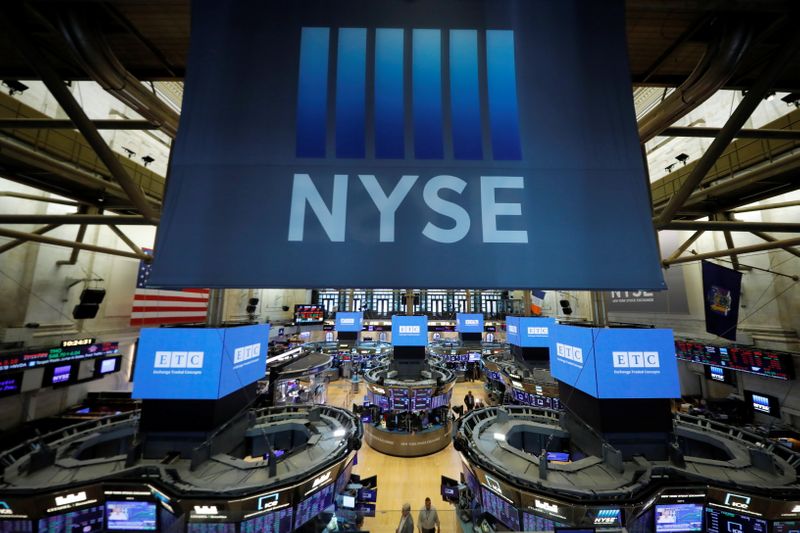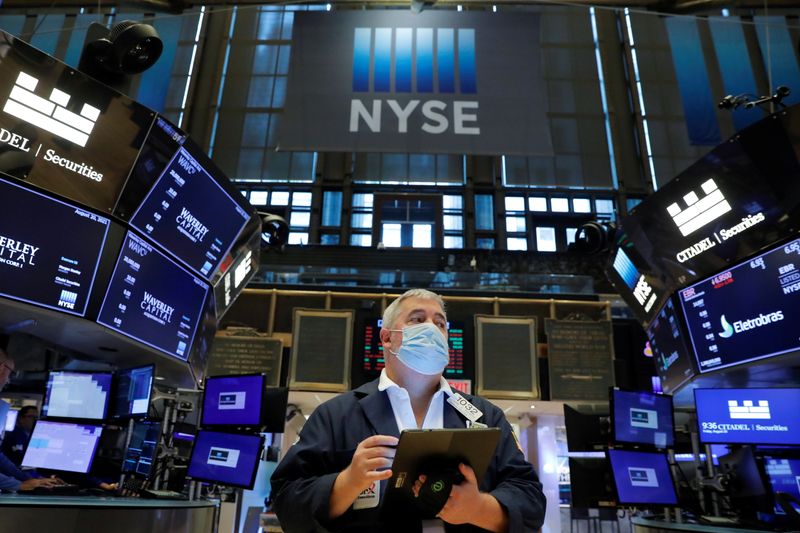By David French
(Reuters) - The Nasdaq closed Wednesday at a record high, and the S&P 500 rose but just missed a fresh peak, as September kicked off with renewed buying of technology stocks and private payrolls data, which supported the case for dovish monetary policy.
Technology stocks, which tend to benefit from a low-rate environment, finished higher. Apple Inc (NASDAQ:AAPL) rose 0.4% to its second-highest close, and Facebook Inc (NASDAQ:FB), Amazon.com Inc (NASDAQ:AMZN) and Google-owner Alphabet (NASDAQ:GOOGL) Inc all advanced between 0.2% and 0.7%.
Utilities and real estate - sectors considered as bond-proxies or defensive - were the top performers.
"Given there's going to be some choppiness in the economic recovery because of COVID, people will look for where they can find the best future growth potential," said Chris Graff, co-chief investment officer at RMB Capital.
Wall Street's main indexes have hit record highs recently, with the benchmark S&P 500 notching seven straight monthly gains as investors shrugged off risks around a rise in new coronavirus infections and hoped for the Fed to remain dovish in its policy stance.
Each new data release though is viewed by investors through the prism of whether it could push the Fed to taper sooner rather than later.
A report by ADP, published ahead of the U.S. government's more comprehensive employment report on Friday, showed private employers hired far fewer workers than expected in August.
Another set of data on Wednesday showed U.S. manufacturing activity unexpectedly picked up in August amid strong order growth, but a measure of factory employment dropped to a nine-month low, likely as workers remained scarce.
"We've got the jobs report on Friday, but what's become more important is the job openings report next week and the CPI release after that, so a lot about employment and inflation in the next couple of weeks which will reset people's expectations for tapering and interest rates," Graff added.
The Dow Jones Industrial Average fell 48.2 points, or 0.14%, to 35,312.53, the S&P 500 gained 1.41 points, or 0.03%, to 4,524.09 and the Nasdaq Composite added 50.15 points, or 0.33%, to 15,309.38.
Falling 1.5% on the day, and down for the third straight session, was the energy index.
Crude prices were flat after OPEC and its allies agreed to stick to their existing policy of gradual output increases. However, the full extent of damage to U.S. energy infrastructure from Hurricane Ida is still being established [O/R]
More than 80% of oil and gas production in the Gulf of Mexico remains offline, while analysts have warned that restarting Louisiana refineries shut by the storm could take weeks and cost operators tens of millions of dollars in lost revenue.
PBF Energy (NYSE:PBF) Inc, whose 190,000 barrel-per-day Chalmette, Louisiana, refinery lost power following the storm, slumped 6.8% on Wednesday, taking its losses this week to 11.2%.

Volume on U.S. exchanges was 9.81 billion shares, compared with the 8.99 billion average for the full session over the last 20 trading days.
The S&P 500 posted 55 new 52-week highs and no new lows; the Nasdaq Composite recorded 131 new highs and 17 new lows.
